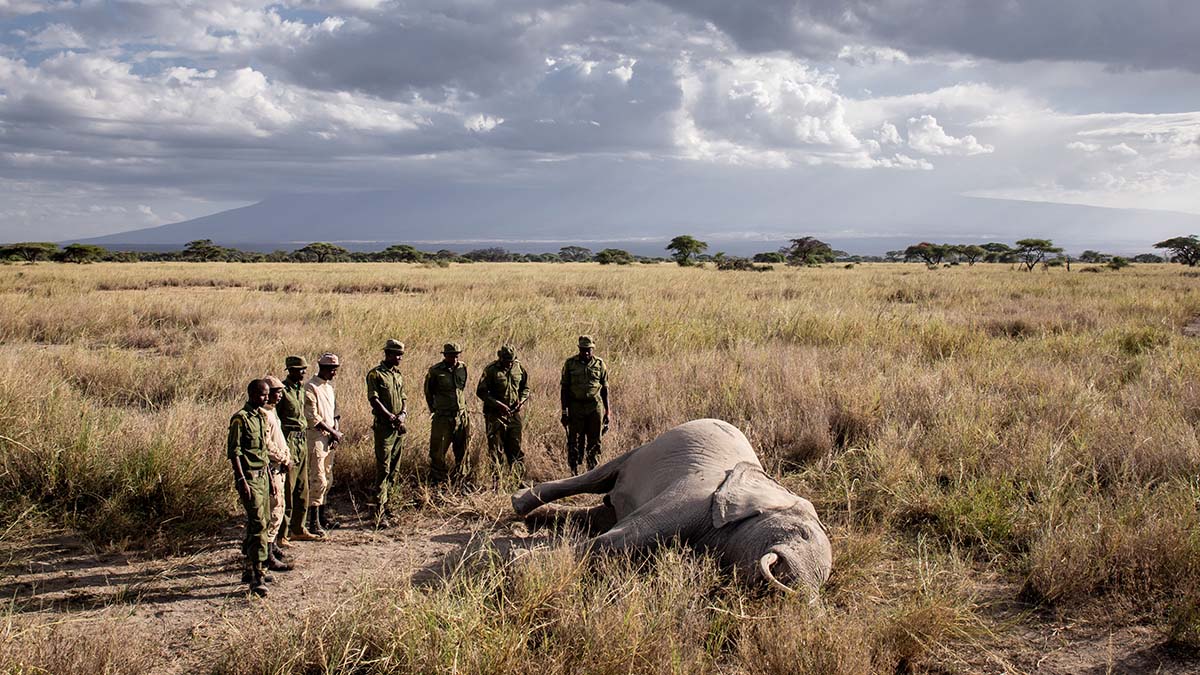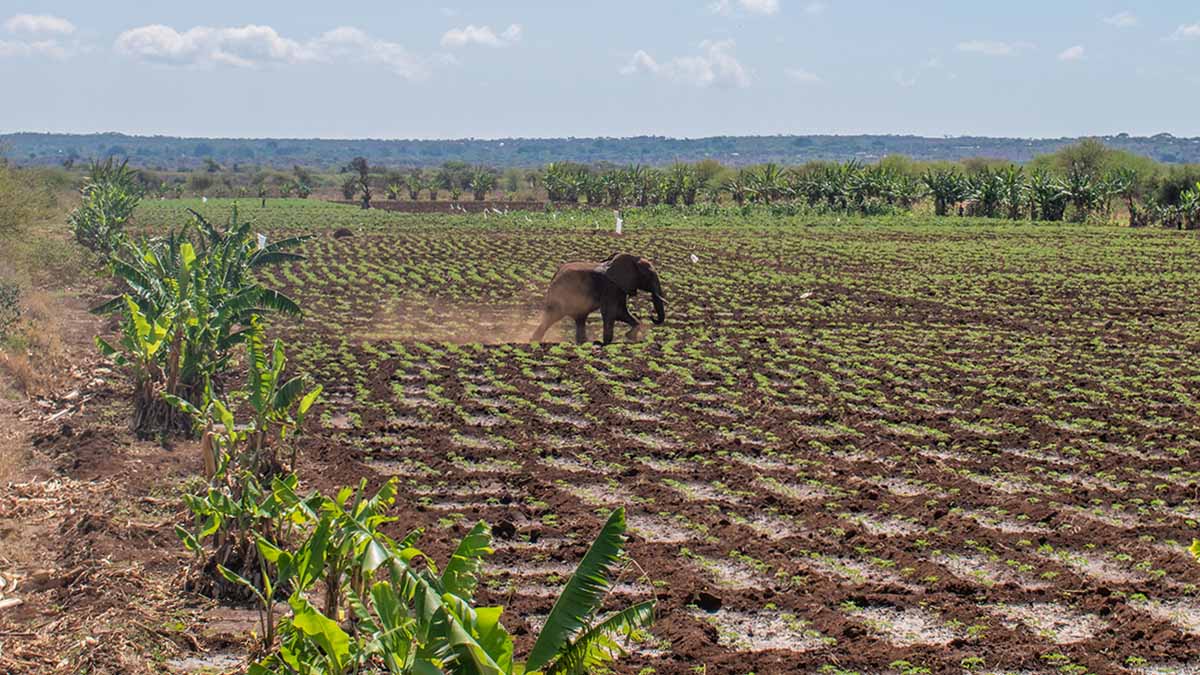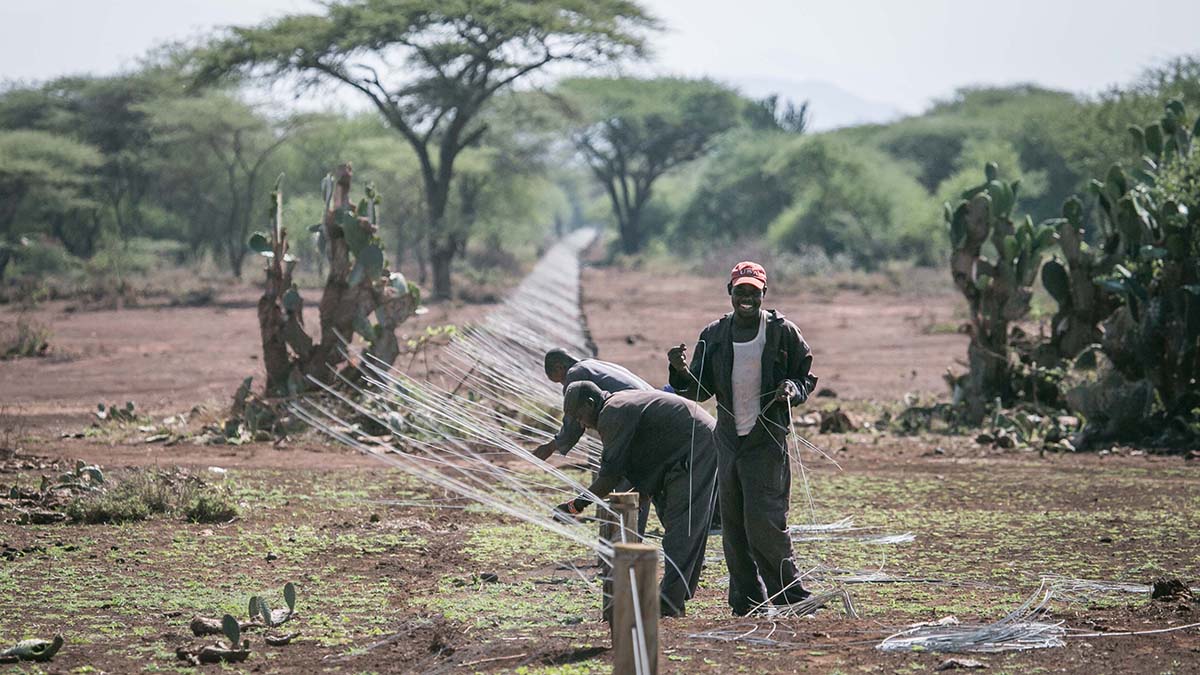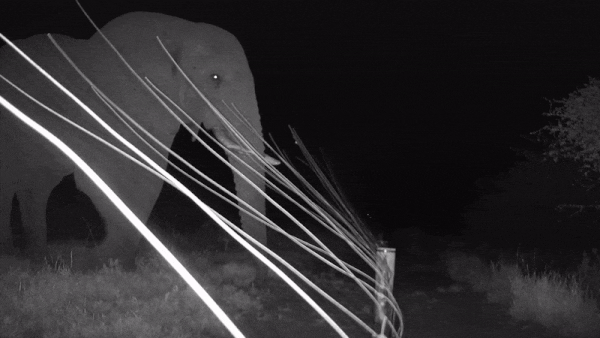 Always roll a dead elephant. It’s the only way to be sure of how it died.
Always roll a dead elephant. It’s the only way to be sure of how it died.
In this case, the initial report from Big Life rangers was a suspected natural death. The female elephant was lying in a community conservancy with no obvious wounds, her tusks still intact.
But hidden on the underside of her body was a puncture wound that told a different story. A tragic story of an elephant herd that walked into a farm at night seeking food, a farmer awoken to the sound of his family’s livelihood being destroyed, and a spear thrown in desperation. This was just 10 days ago.
An elephant death is never good news, but this is one of only three elephants killed for crop-raiding in the last four years in Big Life’s core area of operation. That’s a dramatic reduction from the 14 elephants who were killed by farmers in the four years before that.
That was a period when things were spiraling out of control. The hotline in Big Life’s radio room was ringing off the hook with farmers’ calls for help.
At that time, elephants could raid the farmlands anywhere along a line more than 150 km long, and Big Life’s rangers were exhausted. Nights were spent rushing around in the dark, chasing elephants out of one farm only to have them show up in another farm a short time later.
The cost was huge, for Big Life and for the people whose crops were being destroyed on a nightly basis. Our rangers were being run ragged, and the farmers were running out of patience.
Something had to be done, and it needed to happen quickly.
With your help, we started an ambitious project to build a protective line of fencing where conflict had become the deadliest. It took three years to build 100 km of fence, creating a hard boundary between two worlds, with farmers on one side and elephants on the other.
Powered by solar energy, the fence was immediately effective. In the areas where it stands, conflict between humans and elephants has dropped by 90%.
But we never expected to build the fence and call it a day. Elephants don’t give up that easily, especially smart, hungry ones.
The fence is made up of three wires that function as part of a team, working hardest at night when elephants try to raid crops under cover of darkness. By day, the Big Life human fence teams come out. They walk every inch to check for damage and do repairs on the fly, preparing the fence for the night to come.
The fence was damaged 331 times in 2022, by elephants and other animals trying to break through. Were it not for the daily checks and maintenance, the fence wouldn’t last a week, and the deadly clashes would escalate again.
It is not an impenetrable barrier, and elephants do break through. When this happens, Big Life rangers are on call to prevent crop raids and push the elephants out, temporarily switching off the fence to direct them back to safety.
This fence has been a lifesaver but is now facing its most difficult test: a drought that has turned the land to dust. Crops are also struggling, but they are still the greenest thing for miles and a magnet for elephants and other animals. While we wait for the rains to return, the fence has become more important than ever.
Elsewhere across Amboseli, in places without fencing, the battle continues. We recorded 164 elephant crop raids last year, destroying an estimated 100 acres of crops. Meanwhile, Big Life rangers prevented 175 crop raids. But elephants are still being speared, like the female whose body was found last week.
We have not extended the fence to all areas of existing conflict, because the lines between farmland and wilderness in many places are still shifting due to changes in ownership and land use. Once these lines solidify and we have the necessary funding, we will continue to build more of this protective barrier.
Until then, Big Life’s rangers will work to keep the peace in those areas, and our fence teams will ensure that the existing fence continues to protect the most conflict-prone areas of the ecosystem.
The annual cost to keep it running, protecting thousands of acres of farmland, and saving the lives of countless elephants, is about $220,000. This includes the salaries and operating expenses of all fence teams, as well as all the cost of materials and labor for repairs and maintenance.
Unfortunately, persistent global inflation is driving the costs of all Big Life programs ever upward, at a time when the stakes are high. On average, fence maintenance costs have shot up by 53%, and petrol for vehicles needed to move rangers and maintenance teams during the night has risen by 50%.
As far as peacekeeping missions go, we believe this is worth every penny. And we need your help. Please donate to help us keep the fence operational and our rangers on patrol. Elephant and human lives depend on it.
NEW SHORT-FILM
Defusing a Time Bomb: A Life-Saving Fence
Please take a moment to learn why we built the fence and how it has become critical to preventing human-elephant conflict.




